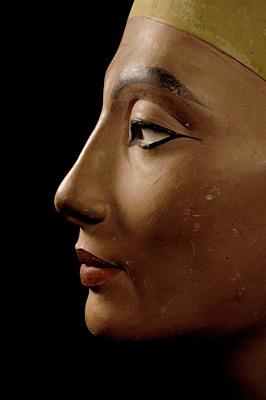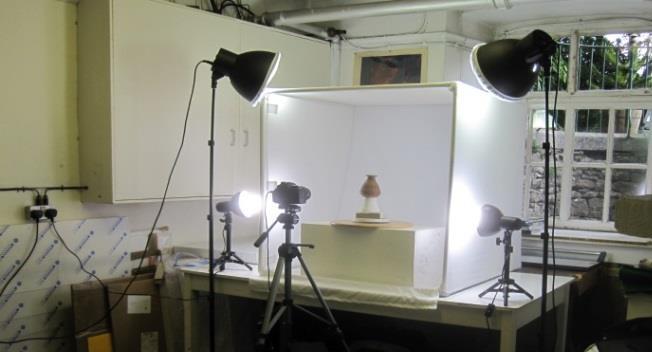 Years ago, I visited Berlin and had the privilege of seeing first-hand the bust of Nefertiti, the crown jewel in the collection of the city’s fantastic Egyptian Museum. Being in the same room as such an iconic and recognizable artifact, I was first taken aback by how small and delicate it appeared compared to the image I had in my head. Just as quickly, I also came to understand that any picture could not capture the truly startling beauty of the bust when seen up close.
Years ago, I visited Berlin and had the privilege of seeing first-hand the bust of Nefertiti, the crown jewel in the collection of the city’s fantastic Egyptian Museum. Being in the same room as such an iconic and recognizable artifact, I was first taken aback by how small and delicate it appeared compared to the image I had in my head. Just as quickly, I also came to understand that any picture could not capture the truly startling beauty of the bust when seen up close.
Imagine how much more compelling it would be to be able to, not only look at an artifact but also to handle it and feel the skill and artistry of court sculptor Thutmos, who created the piece in around 1340 BC.
Now, a team of research engineers from Lancaster University in the UK have tried to achieve just that by offering schoolchildren the chance to handle ancient Egyptian artifacts at the nearby Kendal Museum – without any fear of damaging the 3,000-year-old relics.
 Using a simple digital SLR camera used to photograph objects from every angle, readily-available software to stitch the images together into a 3D model, and the university’s simple SLS printer, the team reproduced a range of objects including pottery, a clay head and a figurine of a warrior.
Using a simple digital SLR camera used to photograph objects from every angle, readily-available software to stitch the images together into a 3D model, and the university’s simple SLS printer, the team reproduced a range of objects including pottery, a clay head and a figurine of a warrior.
The museum’s archaeology curator Morag Clement said: “These Ancient Egyptian items are so rare that normally we don’t let anybody touch them. With these copies, people can pick them up, touch and interact with them instead of just viewing them behind glass. We can also put them into loan boxes sent out to schools to teach the children about history.”
The replicas were created by PhD student John Kaufman and Dr Allan Rennie from the Department of Engineering at Lancaster University. Kaufman told 3DPrint.com that one of the primary objectives of the research was to develop a simple production process that could be adopted by museum staff with minimal training.
“The main problems at the present time occur if the object has reflective surfaces or is transparent,” said Kaufman. “Ideally the object should be well lit, with no shadows or highlights. I have seen examples of reverse engineered solid 3D replicated models that have been made using laser scanning techniques and LS with photographs, but nothing using only a single digital SLR camera [and] single camera photogrammetry to produce the finished additive manufactured replica.”
While this first crop were simply printed in white nylon 12 polyamide – the emphasis was on developing a simple process rather than closely mimicking the relics – the approach could be easily adapted to create more sophisticated items that matched the originals more closely in terms of color and materials.
The Egyptian artifacts were reproduced using AgiSoft’s PhotoScan Pro together with a secondary processing software – Netfabb’s Studio Pro 4 – which are both ‘off the peg’ programs, said Kaufman, who presented the work at the SME Engineering Systems and Design Analysis Conference in Copenhagen, Denmark, on 25-27 June. The technique could also make it easier to digitally repair broken antiquities, he suggested.
The Kendal Museum isn’t the only ones participating in such measures. In fact there are several major museums around the world who have taken to 3D scanning and printing to further the interaction that attendees are able to enjoy with their exhibits. Should all museums adopt similar approaches? Let us know your opinion in the 3D Printing Egyptian museum artifacts forum thread on 3DPB.com.
Subscribe to Our Email Newsletter
Stay up-to-date on all the latest news from the 3D printing industry and receive information and offers from third party vendors.
You May Also Like
Precision at the Microscale: UK Researchers Advance Medical Devices with BMF’s 3D Printing Tech
University of Nottingham researchers are using Boston Micro Fabrication‘s (BMF) 3D printing technology to develop medical devices that improve compatibility with human tissue. Funded by a UK grant, this project...
3D Printing Webinar and Event Roundup: April 21, 2024
It’s another busy week of webinars and events, starting with Hannover Messe in Germany and continuing with Metalcasting Congress, Chinaplas, TechBlick’s Innovation Festival, and more. Stratasys continues its advanced training...
3D Printing Webinar and Event Roundup: March 17, 2024
It’s another busy week of webinars and events, including SALMED 2024 and AM Forum in Berlin. Stratasys continues its in-person training and is offering two webinars, ASTM is holding a...
3D Printed Micro Antenna is 15% Smaller and 6X Lighter
Horizon Microtechnologies has achieved success in creating a high-frequency D-Band horn antenna through micro 3D printing. However, this achievement did not rely solely on 3D printing; it involved a combination...






























